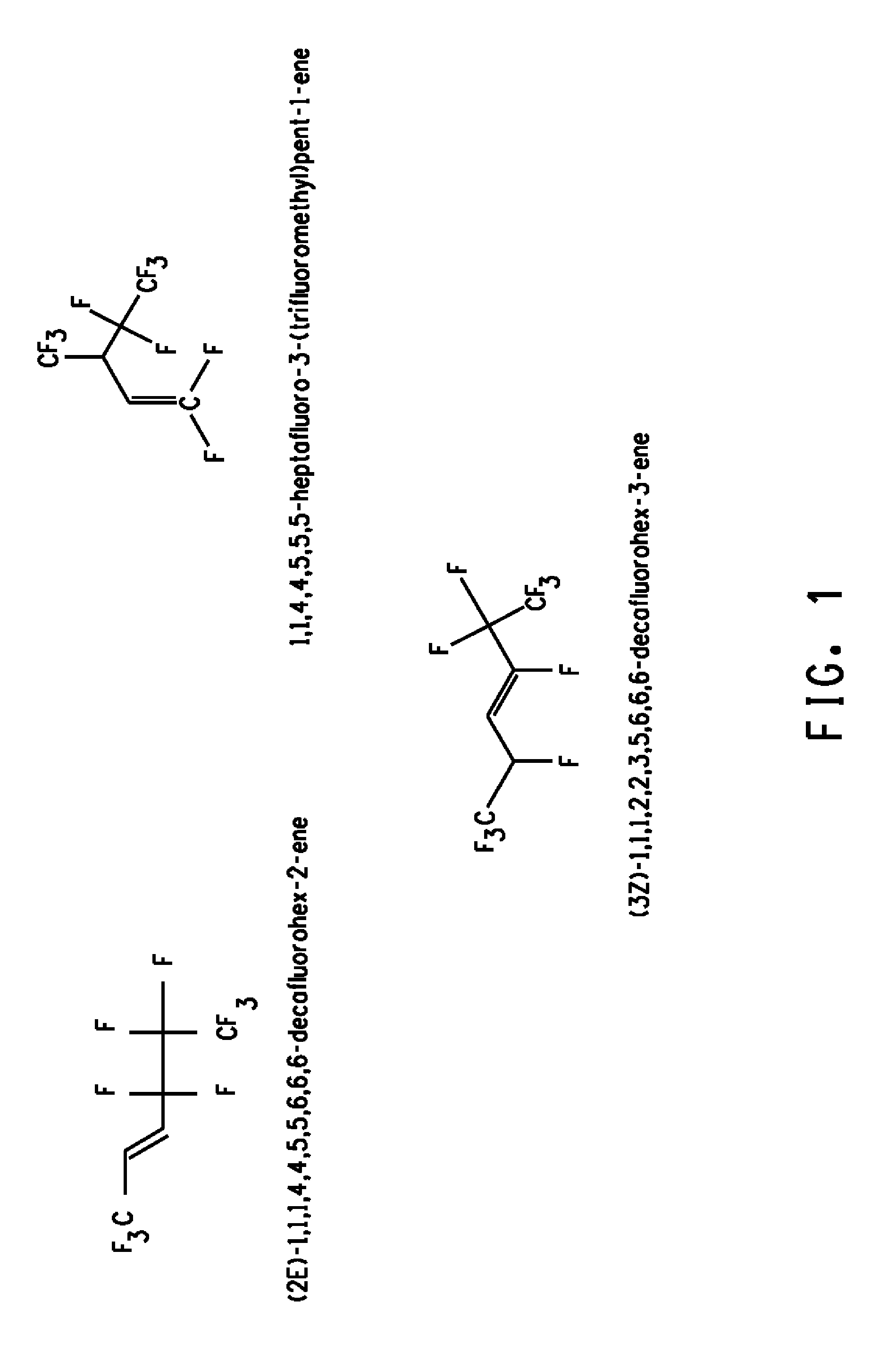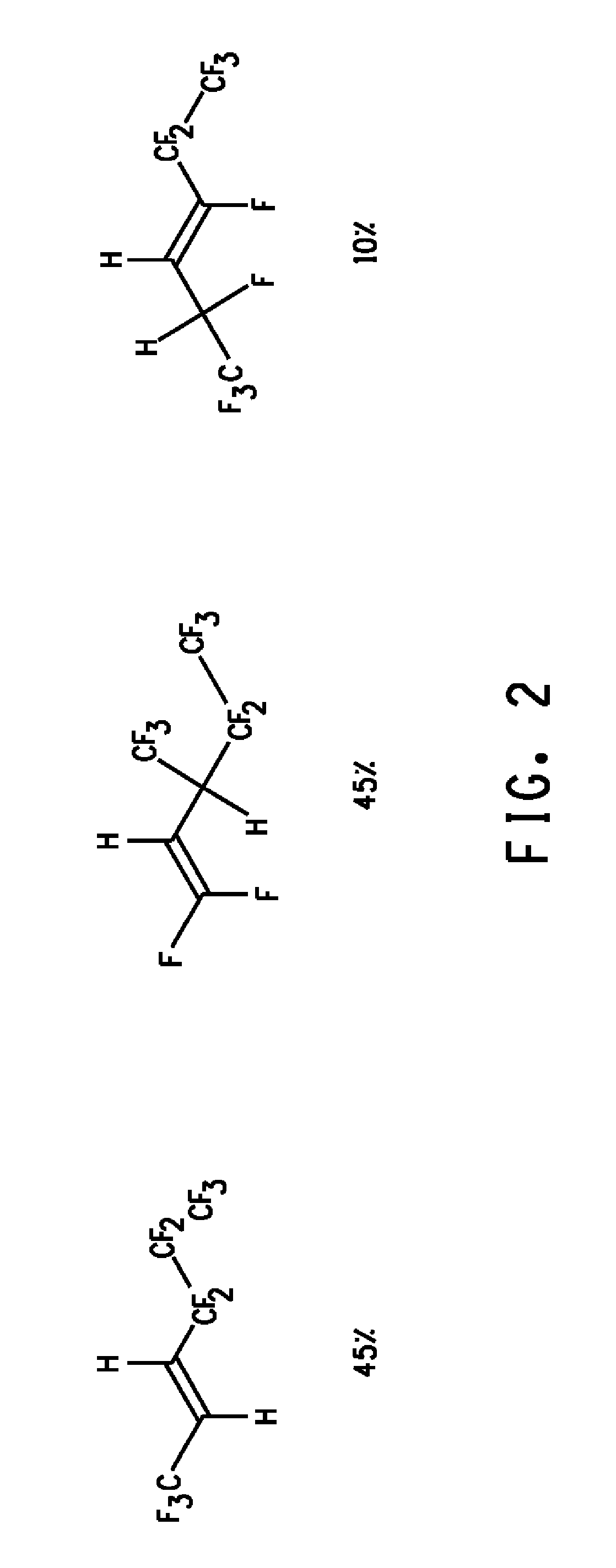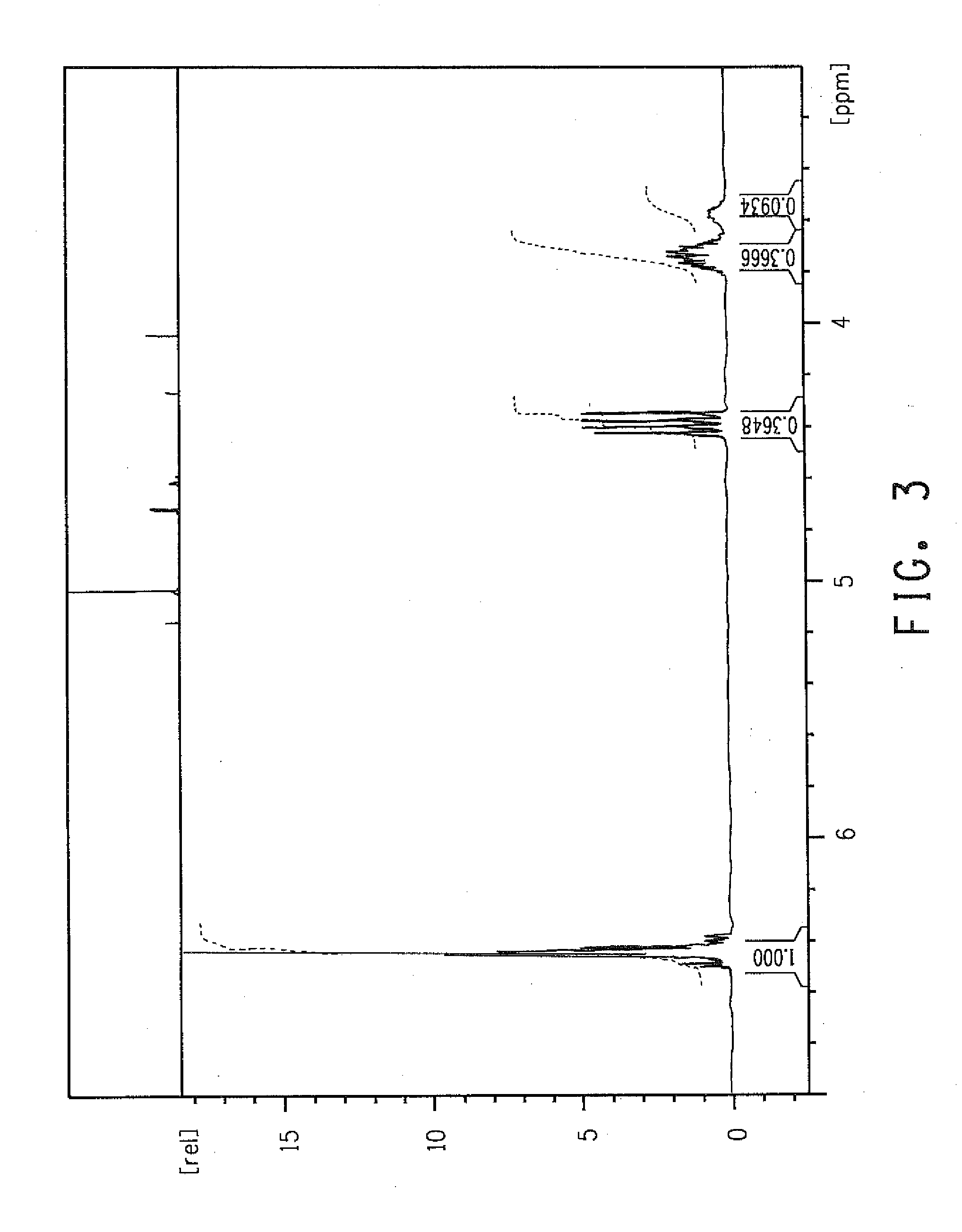Novel 1,1,1,4,4,5,5,6,6,6-decafluorohex-2-ene isomer mixtures and uses thereof
a technology of decafluorohex-2ene and isomer mixture, which is applied in the field of specialty fluid materials, can solve the problems of cfc compounds such as chlorine-containing compounds that are considered to be detrimental to the earth's ozone layer
- Summary
- Abstract
- Description
- Claims
- Application Information
AI Technical Summary
Benefits of technology
Problems solved by technology
Method used
Image
Examples
example 1
[0143]Example 1 demonstrates the reaction of trans 1,1,1,4,4,4-hexafluoro-2-butene with tetrafluoroethylene to make the 153-10 isomers in the presence of SbF5 catalyst.
[0144]A 400-ml Hastelloy® shaker tube was charged with 8 g (0.037 mol) of SbF5 as catalyst. The reactor was chilled to −45° C. and was twice evacuated and purged with N2. At −45° C., 170 g (1 mol) of CF3CH═CHCF3 was added to the reactor under vacuum. Subsequently, 70 g (0.7 mol) of tetrafluoroethylene was added slowly in 10 g increments to the reactor. The contents in the reactor were stirred after all tetrafluoroethylene was added. The reactor was allowed to warm up to the room temperature without any external heating. Stirring was continued for additional 15 min after the reactor reached room temperature. Subsequently, the reactor was immediately chilled to −40° C. In the next step, 70 ml of phosphate buffer was slowly injected into the reactor. The pressure of the reactor decreased from 105 psig to 8 psig during th...
example 2
[0145]Example 2 demonstrates the reaction of trans 1,1,1,4,4,4-hexafluoro-2-butene with tetrafluoroethylene to make the 153-10 isomers in presence of aluminum chlorofluoride as catalyst.
[0146]A 400-ml Hastelloy® shaker tube was charged with 2 g of aluminum chlorofluoride as catalyst. The reactor was chilled to −10° C. and was twice evacuated and purged with N2. At −10° C., 82.5 g (0.5 mol) of CF3CH═CHCF3 was added to the reactor under vacuum. Subsequently, 20 g (0.25 mol) of tetrafluoroethylene was added slowly to the reactor. The contents in the reactor were stirred after all tetrafluoroethylene was added. The reactor was allowed to warm up to the room temperature without any external heating. Stirring was continued for additional one hour after the reactor reached room temperature. In the next step, 20 ml water was slowly injected into the reactor. The pressure of the reactor decreased from 120 psig to 11 psig during the reaction. The product was vapor-transferred in a receiver cy...
example 3
[0147]Example 3 demonstrates the distillation of crude 153-10 isomers from the reaction of trans 1,1,1,4,4,4-hexafluoro-2-butene with tetrafluoroethylene in presence of SbF5 catalyst with a starting reaction temperature of −50° C.
[0148]The crude mixture of the 153-10 isomers was purified by distillation to remove remaining trans 1,1,1,4,4,4-hexafluoro-2-butene, and isolating the 153-10 isomers from higher TFE analogues (e.g. 4,5-dihydrotetradecafluoro-4-octene and / or other 173-14 isomers). The distillation apparatus consisted of a 1-L pot, a heating mantle with magnetic stirring; an 18-inch, Hastelloy®-packed and vacuum-jacketed column, a high-reflux-ratio (60:3 s / s) still-head with magnetic valve; and a condenser (starting at −15° C.). The crude products (6ט240-g) were cannula-transferred to the dry ice-chilled still-pot. A first fraction (about 300 g) of trans 1,1,1,4,4,4-hexafluoro-2-butene isomers was isolated at about 9.4° C. to 12.8° C. A second main fraction (about 900 g) wa...
PUM
| Property | Measurement | Unit |
|---|---|---|
| temperature | aaaaa | aaaaa |
| temperature | aaaaa | aaaaa |
| temperature | aaaaa | aaaaa |
Abstract
Description
Claims
Application Information
 Login to View More
Login to View More - R&D
- Intellectual Property
- Life Sciences
- Materials
- Tech Scout
- Unparalleled Data Quality
- Higher Quality Content
- 60% Fewer Hallucinations
Browse by: Latest US Patents, China's latest patents, Technical Efficacy Thesaurus, Application Domain, Technology Topic, Popular Technical Reports.
© 2025 PatSnap. All rights reserved.Legal|Privacy policy|Modern Slavery Act Transparency Statement|Sitemap|About US| Contact US: help@patsnap.com



